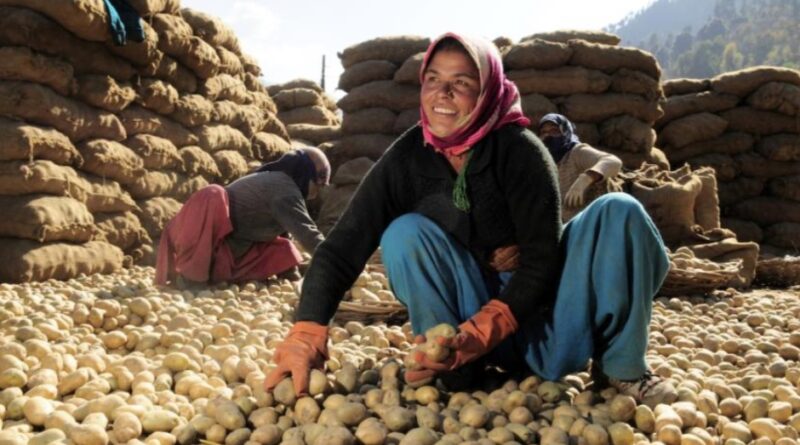Lahaul’s Potato Goldmine: How a Himalayan Valley Became India’s Seed Hub
Long before the Atal Tunnel opened the floodgates to tourism in Lahaul Valley, this remote Himalayan region had already carved out a name for itself—not with snow-capped peaks or scenic drives, but with potatoes. Yes, potatoes. And not just any kind, but high-quality seed potatoes that have quietly powered India’s snack industry and farming economy for decades.
From Missionaries to Multinationals: A Crop with History
The story begins in 1854, when German missionaries introduced potato farming to the locals near Keylong. Back then, it was a survival crop—grown for food during the harsh winters when the valley remained buried under snow for six months. But everything changed after 1965, when the government began promoting large-scale cultivation. The soil and climate of Lahaul proved ideal, and soon, the valley was producing some of the best seed potatoes in the country.
Santana and Jyoti: The Stars of the Soil
Today, Lahaul’s farmers grow hybrid varieties like Santana and Jyoti, prized for their uniform shape and thin skin—perfect for chips and bhujia. A single 50-kg bag of Santana seed can yield up to 400 kg of potatoes. These seeds are so sought after that multinational companies regularly sign contracts with local farmers, supplying seeds and buying back the harvest at ₹20–₹30 per kilo.
Contract Farming in the Clouds
Around 2,200 farmers in Lahaul are engaged in potato farming, many through contract agreements with major food and seed companies. These firms supply the initial seed stock and later purchase the produce, which is shipped to states like Punjab, Haryana, Uttar Pradesh, Gujarat, West Bengal, and Maharashtra. The Lahaul Potato Society (LPS), formed in 1966, plays a key role in coordinating these efforts, supporting over 2,000 farmers.
Beating the Dutch at Their Own Game
In 2020, Lahaul made headlines by outperforming the Netherlands in per-hectare potato yield. The valley produced an average of 17–21 metric tonnes per hectare, compared to the Dutch average of 15–16. That year, 978 hectares yielded over 16,600 metric tonnes of potatoes—an astonishing feat for a tribal district nestled in the Himalayas.
A Changing Landscape
While potatoes remain the backbone of Lahaul’s economy, farmers are now diversifying into crops like broccoli, cauliflower, and peas. Still, the valley’s reputation as a seed potato hub remains strong. Every year, around 685 hectares are dedicated to potato farming, producing nearly 10,000 tonnes of the crop.
Weather Woes and Farmer Worries
This year, however, nature hasn’t been kind. Unseasonal snowfall and heavy rains have damaged nearly 40% of the crop. Farmers who were in the middle of harvesting watched helplessly as their fields were buried under snow. Local leaders are urging the government to assess the damage and provide relief to affected growers.
Rooted in Resilience
Despite the setbacks, Lahaul’s farmers remain resilient. Their story is one of innovation, adaptation, and quiet excellence. From missionary seeds to multinational contracts, Lahaul’s potato legacy is a testament to how even the most remote corners of India can shape the nation’s agricultural future—one spud at a time.



